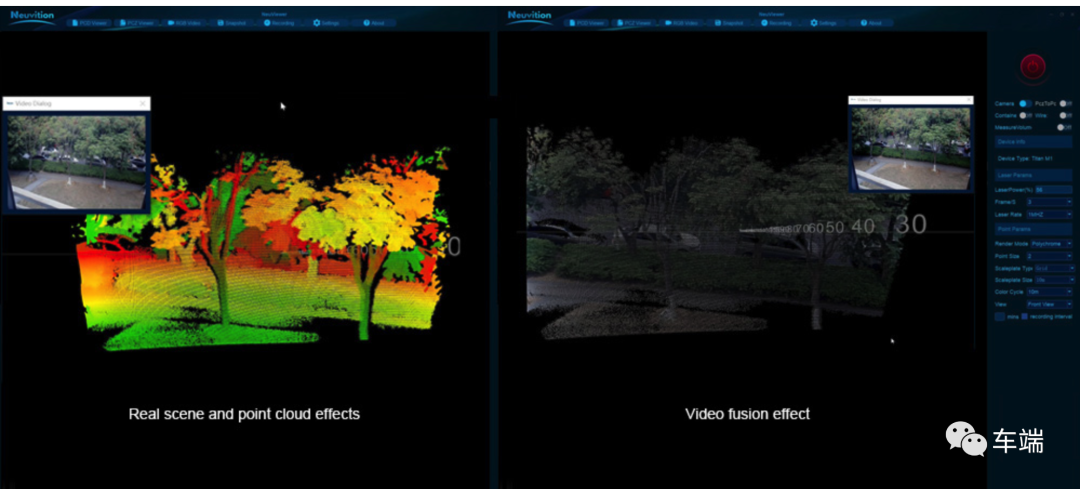At CES 2023, 4D imaging millimeter-wave radar (short for 4D millimeter wave radar, 4D Imaging Radar or 4D radar) is getting a lot of attention. Many chip companies have introduced or updated their imaging radar solutions, and radar system manufacturers have also brought their imaging radar products. Amnon Shashua, CEO of Mobileye, said in his CES speech that he would only want 4D radar by 2025, in addition to front-facing lidar, drawing attention from the industry. Some industry experts even speculate that 4D imaging radar will replace Lidar in the near future.
What is 4D millimeter wave radar?
4D millimeter wave radar, also known as imaging radar, can process altitude information in addition to its original function. Can detect the object's orientation, distance, speed, height and other four - dimensional data. At the same time, the 4D imaging millimeter wave radar has pixel-level angular resolution, which can distinguish the contour of the target object, so that the radar can realize the imaging function similar to that of Lidar.
In terms of performance, 4D radar is an upgraded version of traditional millimeter-wave radar. In terms of cost, 4D radar costs only 10% to 20% of Lidar.
What is the difference between 4D millimeter wave radar and traditional radar?
(1) Due to the lack of altitude information, traditional radar has only one plane in the Angle of view and cannot distinguish whether the target object is 'on the road' or 'in the air'. This makes millimeter-wave radar unable to effectively play its role in automatic driving perception, especially in static object recognition. 4D radar greatly improves the confidence of millimeter wave in static object recognition.
(2) With the ability to provide target height information, the 4D millimeter wave radar can capture the spatial coordinates and speed information of the target around the vehicle, and calculate the pitch Angle information of the target, so as to provide the surrounding environmental information of the vehicle, and provide more functions, such as realistic path planning and passable space detection.
(3) Traditional radar has disadvantages such as low resolution and high noise. By increasing the number of real or virtual antennas, 4D radar can effectively improve the angular resolution, generate more point clouds, and further image the basic outline, edge and shape of the target object. Traditional ones are also somewhat cloudy, but less numerous and without elevation information. 4D imaging millimeter-wave radar can provide pitch Angle information and more point cloud data. After deep learning, 4D radar can also distinguish different targets such as pedestrians, bicycles, cars and trucks.
Will 4D millimeter wave Radar replace Lidar?
Whether Lidar or 4D imaging radar will become the main sensor for smart driving cars in the future may still depend on specific scenarios. Different solutions will be developed for different functions and requirements. 4D millimeter wave radar and Lidar have their own characteristics and can give full play to their strengths. 4D imaging radar cannot replace long-range high-performance imaging Lidar, but it is expected that side radars will be mounted on vehicles in the near future.
(1) From a technical point of view, the accuracy of 4D millimeter wave radar is an upgraded version of traditional radar, but not of the same order of magnitude as that of Lidar. It has been thought that 4D imaging millimeter-wave radar may replace near-light Lidar in the future. In terms of price, some 4D radars are not cheaper than Flash LiDAR, and single-chip 4D radar is still in the early stage of development. It could take three years or more to build a standardized, mass-produced product. In the future, 4D imaging radar may replace traditional millimeter wave radar rather than Lidar.
(2) From the point cloud effect, although 4D millimeter wave radar also has imaging function, it is still unable to match Lidar in point cloud density and quality, and it is difficult to meet the requirements of high definition perception-level automatic driving. Considering the current time node, there is still a large gap between 4D imaging millimeter-wave radar and main sensor Lidar in point cloud density and quality, and 4D imaging radar cannot replace long-range lidar for forward perception.

(3) In the automatic driving scenario, the forward detection accuracy is very high. When the vehicle is moving forward, it must be able to accurately detect and identify the size, distance, orientation, speed and other information of the objects in front of it. Any false or missed alarm may directly lead to the accident. LiDAR scans its surroundings to form a 3D image model and can generate millions of point clouds per second in a horizontal field of vision. Its point cloud density is sufficient to meet the perceptual needs of autonomous driving at all levels.
LiDAR and 4D imaging radar complement each other. The industry has been debating the merits and demerits of millimeter wave radar, cameras and lidar. It turns out that autonomous driving is impossible with a single sensor, because each sensor has its own advantages and disadvantages. The precision and accuracy needed for autonomous driving can only be achieved if all the sensors are fused together.